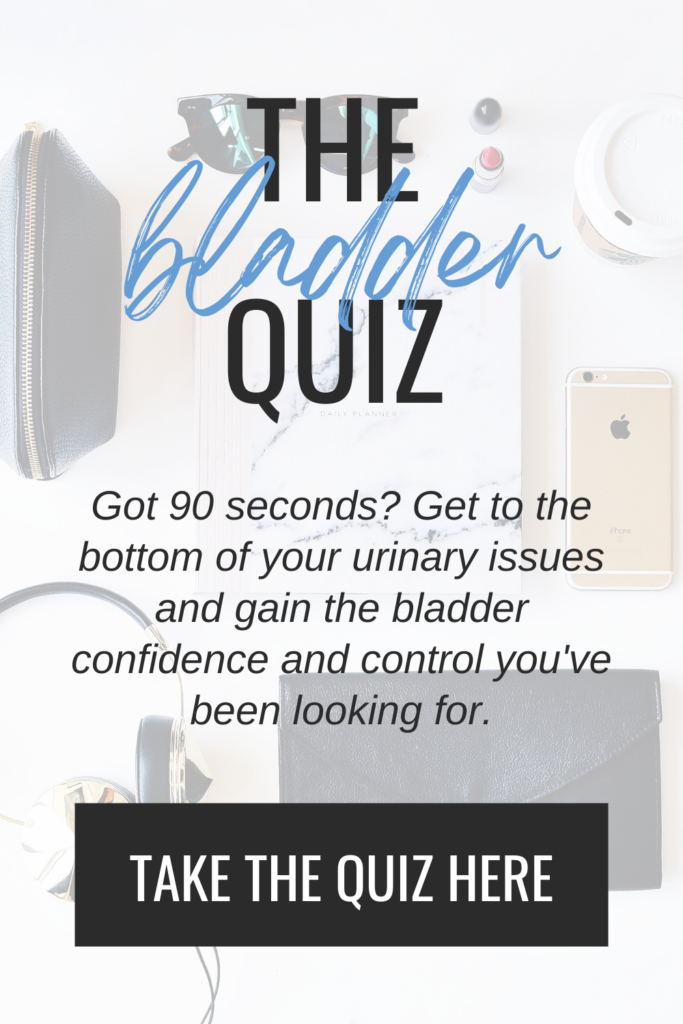Endometriosis is a real bitch. There…I said it. As a woman who has it and pelvic rehab therapist who treats it, I can personally tell you that the pain this disease causes, life plans it throws for a loop, relationships it affects, and energy it consumes is real, and really overwhelming.
But here’s the deal- endo can’t be healed. At least not yet. There are surgeries to remove it, diets to control it, and lifestyle changes to appease it, but endometriosis is like a rock in your shoe— an annoying, just out of reach rock that no matter how hard you try, it just keeps digging right into your heel. So when I’m talking to my patients [and to you, my beautiful reader, today], I like to make it very clear that the goal with endo is management…not healing.
If we start our endo journey expecting healing, we’re going to be disappointed. Even an excision surgery done by the most skilled specialist (which is the gold standard for endometriosis removal, btw, and this is a great place to see if there are any specialists in your area) doesn’t promise full resolution of symptoms. And due to the nature of the disease, return is likely.
This is why many doctors prescribe some sort of hormonal suppression, typically in the form of birth control, to “manage” endometriosis. Because even though we don’t know what causes endo, it’s likely that hormones are a piece of the puzzle.
But this isn’t management… In fact, hormonal birth control can cause gut issues, mineral depletion, and a weaker immune system, all other contributors to the endometriosis puzzle. Hormone suppression often masks endo symptoms and the long-term side effects aren’t typically seen until later down the road. Once you stop hormone suppression (or never start it in the first place), this is where the real management comes in.
My story involves using hormonal birth control for five years after an endometriosis excision. I didn’t know better and no one told me I had other options. I texted my husband on a cold January morning telling him I wanted to take a different approach to managing my endo, and have spent the last two years learning, practicing, trouble shooting, and perfecting my natural endo management and helping my patients do the same. Keep reading for my most helpful strategies >>>
Stress Management
Before you roll your eyes and close out of this tab…hear me out. Stress is rampant in our modern society. Running into a lion while out hunting and gathering isn’t the only thing your girl has to worry about any more…ya know!? There are schedules, deadlines, budgets, family obligations, work expectations, world events, natural disasters, and the list goes on. Unfortunately, the brain processes the fear of giving a presentation the same way it would running into said lion, and a full body stress response begins.
Living at a chronic level of stress, eeeeeeven if it’s low, leads to hormone surges, inflammatory processes, and musculoskeletal responses— all things that aren’t the best for endometriosis, and can worsen symptoms over time.
Controlling stress looks different for everyone and I encourage you to find what works for you. Meditation, breath work, journaling, and exercise are my go-to ways to bring my body back to baseline, and I’ve learned that keeping up with all of the above regularly really helps my common endo symptoms of bloating, pelvic pain, acne, and mood swings.
Pelvic Floor Relaxation
There’s a sling of muscles that sit in the bottom of your pelvis and they’re collectively called the pelvic floor. As a pelvic rehab specialist, this is what I spend my days treating.
In someone with endometriosis, stress, chronic pain, and the scarring and adhesions that take place inside the pelvis and abdomen can cause pelvic floor muscle tightness. While the endometriosis growths themselves can be painful depending on where they are, the primary cause of pain is spasms in the muscles.
Let me say that again…the primary cause of pain is actually spasms in the muscles.
I’ve put my top four pelvic floor relaxation exercises together in a free guide, and stretches, breathing practices, pelvic floor awareness, and postural guidance can all be found inside. These are great for keeping symptoms low, decreasing flare-ups when they happen, reducing pain with intercourse, and making periods a little more bearable.
Serrapeptase
As you know, I’m a physical therapist, so supplementations aaaaaren’t my specialty. That being said, I and my patients have found great success with serrapeptase, the enzyme that silk worms use to break down their silk. Research is showing serrapeptase to have positive affects on inflammation, pain, and swelling, and while it hasn’t been tested specifically in those with endometriosis, it’s known benefits make sense for the disease.
Serrapeptase is strong (as it must be if battling endo), therefore you need to be cautious and slow when introducing it. This is the regimen I and my patients use, but I recommend talking to your doctor before adding this to your diet—
1. Use a trustworthy brand with quality ingredients. There are quite a few options out there, but this is the one I use.
2. If using the brand above, start with half a capsule. Progress to one whole capsule after five days. Increase to one and a half capsules five days after that, and two capsules five days later. The end goal is to take 250,000 SPU of serrapeptase a day. This whole process will take about twenty days.
3. Nausea can be fairly normal when you begin taking serrapeptase. This is one of the many reasons to slowly increase the amount you consume.
4. Serrapeptase must be taken on an empty stomach, either 45 minutes before eating or 3 hours after eating.
It always amazes me that I can tell if my patients have started using serrapeptase. Their belly is often less bloated, abdominal tissue moves easier, and many report less pain. I’ve been taking this for years, even before stopping hormonal birth control, and truly consider it my secret endo weapon.
Diet
What you put in your body and how your body responds to it can greatly affect endometriosis. If you have certain foods that cause inflammation and gut issues, avoiding or eliminating them can help manage endometriosis.
When figuring out what foods were affecting me, I enlisted the help of a functional nutritionist. She recommended the AIP (autoimmune paleo) protocol for 30 days to kiiiiiind of give my body a reset. Then I slowly added foods back in and watched for reactions like gas, bloating, pain, rash, or change in mood. (If you want to learn more about what my AIP experience looked like and the recipes I used to make it 100% doable, check out this blog post.)
I found that my body doesn’t quite like gluten. I haven’t totally cut it out, because pizza is LIFE and I can never get a cauliflower crust to turn out. But…I’m careful about how often I consume it, and know that if I do, my body may respond.
Toxin-Free Living
Just like what we put in the body with our diet, what we put on and around our body can cause inflammation too. We should do our best to avoid toxic ingredients if managing endo is the goal and this includes everything from shampoo to deodorant, makeup to skincare products, laundry soap to household cleaners.
When I realized the affect that “everyday” chemicals can have on endometriosis, I (slowly) swapped out what I had been using for years for products with safer ingredients. Not only did I look for labels with words I could pronounce, but I also used the Think Dirty App which scans products and rates them on a scale from 1 (clean) to 10 (toxic). You can find all of the favorites that I settled on [AND LOVE] here.
This fix won’t necessarily get you instant results, but the long-term effect of decreasing the toxic load on your body can make a huge difference in the life-long battle against endo.
Pelvic Rehab
Beyond DIY strategies like the pelvic floor relaxing exercises listed above, pelvic rehab physical therapists can provide other in-clinic treatments to manage endometriosis symptoms. Some of the options available include—
– mobilization of abdominal fascia, tissues, and organs
– post-operative scar mobilization
– nerve mobilization, manipulation, and down-training
– bowel and gut motility exercises
– more pain-management activities like yoga, massage, cupping, and electrical stimulation
Some of my patients seek help for a short time and move on to independent management when they’re ready. Others see me once or twice a month for maintenance and to keep symptoms at bay. Even if you only make one appointment to hear your options and find out if you’re a good candidate for pelvic rehab, I can’t recommend seeing a pelvic health specialist enough.
Where to go from here—
I love sharing these tips because I [oh so badly] wish these alternatives were offered to me when I was first diagnosed with endometriosis. Hormone suppression and/or laparoscopic excision are a better option for some people, but knowing that there are other diet, lifestyle, and therapy measures that can be tried instead of or in conjunction with those more aggressive options is something women need to be made aware of.
Do your research. Know your alternatives. And if your current medical provider doesn’t support you in your decision…get a new doctor.
Endometriosis is not a death sentence, even though it can feel like it sometimes. I’m living proof that this disease can be managed with mindfulness, proactivity, and a sense of experimentation, as long as you have realistic expectations. Knowledge of endo is only growing, and by stepping up to take your health into your own hands, you’re moving that needle in the right direction.
I can’t wait to watch you thrive.
– Amanda
Disclaimer: The content provided here does not constitute medical advice, nor is it a substitute for personalized healthcare. If you have concerns about a medical condition, diagnosis, or treatment, you should consult with a licensed healthcare professional.
Disclosure: Some of the links above are affiliate links, meaning, at no additional cost to you, I will earn a commission if you click through and make a purchase. No pressure, but I have a feeling you’re gonna like what I’ve taken the time to put my recommendation behind.


















